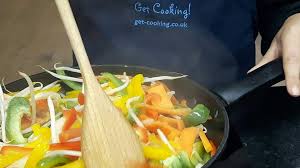Exploring Common Moroccan Food
Moroccan cuisine is a vibrant tapestry of flavours, aromas, and textures that reflect the country’s rich history and diverse cultural influences. From aromatic tagines to sweet pastries, here are some common Moroccan dishes that will tantalise your taste buds:
Tagine
Tagine is perhaps the most iconic Moroccan dish. It consists of slow-cooked meat (often lamb or chicken) with a blend of spices, dried fruits, and nuts. The dish gets its name from the conical clay pot in which it is cooked, preserving the flavours and ensuring tender meat.
Couscous
Couscous is a staple in Moroccan cuisine. This steamed semolina dish is often served with a savoury stew made with vegetables, meat (such as lamb or chicken), chickpeas, and a medley of spices. Couscous is traditionally enjoyed on Fridays—a special day in Moroccan culture.
Mint Tea
Moroccan mint tea is not just a beverage; it’s a symbol of hospitality and tradition. This sweetened green tea infused with fresh mint leaves is served throughout the day in Morocco. The pouring process from high above the glass adds flair to this beloved drink.
Pastilla
Pastilla, also known as bastilla, is a savoury-sweet pastry that combines layers of thin dough filled with shredded pigeon or chicken meat, almonds, eggs, and aromatic spices like cinnamon and saffron. Topped with powdered sugar and cinnamon, pastilla offers a unique blend of flavours.
Harira
Harira is a hearty soup enjoyed during Ramadan to break the fast at sunset. This tomato-based soup contains lentils, chickpeas, rice or vermicelli noodles, herbs like coriander and parsley, and warming spices such as ginger and cinnamon. Harira is both nourishing and comforting.
Briouats
Briouats are delicate pastries filled with savoury ingredients like spiced minced meat (beef or lamb), seafood, cheese or sweet fillings like almond paste or fruit preserves. These crispy triangular parcels are deep-fried to perfection—a delightful snack or appetiser in Moroccan cuisine.
These are just a few examples of the diverse and delicious dishes that make up Moroccan food culture. Each bite tells a story of tradition, craftsmanship, and shared meals among family and friends—a true feast for both the palate and the soul.
Exploring the Delightful Benefits of Moroccan Cuisine: A Journey Through Flavours, Health, and Tradition
- 1. Bursting with Exotic Flavours
- 2. Healthy Ingredients
- 3. Rich Culinary History
- 4. Versatile Dishes
- 5. Shared Dining Experience
- 6. Unique Cooking Techniques
- 7. Inviting Aromas
- 8. Colourful Presentation
- 9. Sweet Endings
Challenges of Common Moroccan Cuisine: Calorie Concerns, Distinct Flavours, and Vegetarian Limitations
1. Bursting with Exotic Flavours
Moroccan cuisine is a culinary delight bursting with exotic flavours that awaken the senses with each mouthful. The intricate blend of sweet, savoury, and aromatic spices in Moroccan dishes creates a sensory explosion that transports you to the bustling markets and fragrant kitchens of Morocco. From the rich depth of tagines to the delicate sweetness of pastries, every bite is a harmonious symphony of taste that showcases the unique and diverse culinary heritage of Morocco.
2. Healthy Ingredients
Many Moroccan dishes stand out for their emphasis on healthy ingredients, incorporating a variety of fresh vegetables, lean meats, nuts, and fruits. This commitment to using wholesome components not only enhances the nutritional value of the cuisine but also contributes to a balanced and nourishing dining experience. By prioritising these natural and nutrient-rich elements, Moroccan food not only delights the taste buds but also promotes overall well-being and vitality.
3. Rich Culinary History
Each dish in Moroccan cuisine is a testament to its rich culinary history, carrying centuries of tradition and cultural significance. From the aromatic tagines to the sweet pastries, each bite offers a glimpse into the country’s heritage and the stories that have been passed down through generations. The flavours and ingredients used in Moroccan dishes not only tantalise the taste buds but also serve as a window into the diverse influences that have shaped this vibrant culinary landscape over time.
4. Versatile Dishes
Moroccan cuisine shines in its versatility, offering a spectrum of dishes that cater to a wide range of tastes and occasions. Whether you’re craving a hearty tagine packed with tender meat and aromatic spices or indulging in delicate pastries filled with savoury or sweet fillings, Moroccan food seamlessly transitions from everyday meals to special gatherings. This adaptability makes Moroccan cuisine a perfect choice for any meal, ensuring that there’s always something on the menu to delight every palate and elevate any dining experience.
5. Shared Dining Experience
One of the standout advantages of common Moroccan food is the shared dining experience it offers. In Moroccan culture, meals are not just about nourishment but also about coming together as a community. The tradition of communal dining fosters a deep sense of connection and warmth among family and friends. Gathering around a table filled with fragrant tagines, couscous dishes, and sweet pastries creates a shared bond that transcends mere sustenance, making every meal a celebration of togetherness and camaraderie.
6. Unique Cooking Techniques
The unique cooking techniques employed in Moroccan cuisine, such as the use of clay tagines for slow cooking, offer a distinct advantage. By simmering ingredients in a tagine over low heat, the flavours meld together harmoniously, creating a depth of taste that is unparalleled. Not only does this method enhance the richness of the dishes, but it also helps to retain the natural juices and nutrients of the ingredients, resulting in tender and succulent meats and vegetables that burst with flavour in every bite.
7. Inviting Aromas
The inviting aromas of Moroccan cuisine are a testament to the artful use of spices such as cumin, cinnamon, saffron, and mint. These fragrant ingredients not only enhance the flavour profiles of dishes but also create an olfactory journey that transports diners to the vibrant and bustling souks of Morocco. The rich scents wafting from tagines, couscous, and mint tea evoke memories of exotic markets and lively gatherings, making every meal a sensory experience that lingers long after the last bite.
8. Colourful Presentation
In Moroccan cuisine, the colourful presentation of dishes is a feast for the eyes as much as it is for the taste buds. Vibrant ingredients such as olives, preserved lemons, and pomegranate seeds not only enhance the visual appeal of Moroccan meals but also contribute to their exquisite flavour profiles. The artful combination of these vibrant elements creates a culinary experience that is both visually stunning and utterly delicious, showcasing the meticulous attention to detail that is characteristic of Moroccan gastronomy.
9. Sweet Endings
Indulge in the sweet endings of Moroccan cuisine, where desserts like baklava and chebakia beckon with their tantalising blend of honeyed sweetness and intricate pastry layers. These decadent treats serve as the perfect conclusion to any meal, offering a symphony of flavours that linger on the palate long after the last bite. Whether you crave the nutty richness of baklava or the floral notes of chebakia, Moroccan desserts are a true delight for those with a sweet tooth.
High calorie content
Some traditional Moroccan dishes, like tagines and pastries, may pose a con in terms of their high calorie content. The generous inclusion of oils, nuts, and sugars in these dishes contributes to their richness but also increases their calorie count. While these ingredients enhance the flavours and textures of the food, it’s essential to consume them in moderation to maintain a balanced diet and healthy lifestyle.
Rich flavours may not appeal to all palates
One drawback of common Moroccan food is that its rich flavours may not appeal to all palates. The bold and complex flavour profiles found in Moroccan cuisine, incorporating a mix of sweet, savoury, and spicy elements, can be overwhelming for those accustomed to milder tastes. While some may relish the intricate blend of spices and textures, others may find the intensity challenging and prefer simpler flavour combinations. It’s important to appreciate the diversity of culinary preferences and acknowledge that Moroccan cuisine may not be to everyone’s liking due to its robust and varied taste sensations.
Limited vegetarian options
In the realm of Moroccan cuisine, one notable drawback is the limited vegetarian options available. While there are indeed some delightful vegetarian dishes such as vegetable tagines and couscous, the culinary landscape in Morocco predominantly revolves around meat-centric offerings. This emphasis on meat-based dishes may pose a challenge for vegetarians seeking a wider variety of choices, potentially restricting their dining options in this flavourful gastronomic culture.




